Mainstreaming satoyama in research, education and regional collaboration towards the revitalization of Noto Peninsula
12.11.2011
-
SUBMITTED ORGANISATION :
-
Kanazawa University
-
DATE OF SUBMISSION :
-
12/11/2011
-
REGION :
-
Eastern Asia
-
COUNTRY :
-
Japan (Kakuma-machi, Kanazawa City, Ishikawa Prefecture)
-
SUMMARY :
-
Kanazawa University is a regional academic institute located in Ishikawa Prefecture, Japan where 70 percent of the land can be classified as satoyama (Nakamura 2006). The area’s biodiversity-rich landscapes and seascapes have been formed through longstanding human-nature interaction that had fueled the area’s once vibrant rural economy. Changes in our lifestyle and industrial structure, however, have resulted in the depopulation and aging of the rural communities, which in turn led to the deterioration of the landscape due to underuse. The state of our satoyama thus signifies the “inconvenient truth” behind Japan’s rapid industrialization and economic growth. As such, it urges us to rethink our development trajectory and the role of academia in society as well. The case study presents our challenge as a regional university in bringing together local, regional and global actors in order to mainstream the satoyama approach as a means towards endogenous development through sustainable nature use. It highlights the inception, expansion and partnership formation of the Satoyama Satoumi Project—a meta-project that would develop to encompass all three pillars of the university’s action goals: to become “a research university dedicated to education, while opening up its doors to both local and global society (Kanazawa University 2010: 4).” Although the process has been site-specific and may allow for little generalization, we hope the case serves as an example for mainstreaming a locally-grounded concept for sustainable development in both the academia and policy-making at various levels from the local to the global.
-
KEYWORD :
-
Satoyama satoumi, regional revitalization, capacity building
-
AUTHOR:
-
Ms. Setsuko Nakayama has conducted her doctoral studies at the Graduate School of Science, Kyoto University, Japan. After her affiliation at the Graduate School of Asian and African Area Studies, she was assistant professor at Faculty of International Studies, Utsunomiya University when she submitted the case study for “Small scale catchment management in Malawi.” As of June 2010 she has joined Kanazawa University, as specially appointed assistant professor at Center for Regional Collaboration for the “Noto Satoyama Meister” Training Program, where she compiled the current case study.
I. The Satoyama Satoumi Project
Kanazawa University
Kanazawa University is located in Kakuma Hills of Kanazawa City, Ishikawa Prefecture. As a central university of the Hokuriku Region, Japan, it boasts 3 colleges and 16 schools with 1,012 teaching staff, enrolls over 8,000 undergraduates and nearly 2,300 graduate students.
The Inception of the Satoyama Satoumi Project
The university’s satoyama-related activities developed alongside the institute’s major transition in its history of over 150 years: our conversion into an independent corporate entity and campus relocation. Founded as a national university in 1949 under the Ministry of Education in accordance with the National School Establishment Law, the institute consolidated various medical, technical and educational facilities in Kanazawa City, the Prefectural Capital, some of which had been in service since the mid 19th century. Within 25 years, however, our operation had outgrown its historically unique campus in Kanazawa Castle. Moreover, the upcoming incorporation of Japanese national universities (2004) obliged us to clarify our social responsibilities. The Satoyama Satoumi Project was launched at this timing of the institute’s rebirth.
The Satoyama of the New Kakuma Campus
The relocation of our campus gradually took place between 1989 and 2010. The acquired 200 hectares in Kakuma Hills, formerly the agricultural and forestry land of Kakuma Town about 5 kilometers from the center of Kanazawa City, had largely retained its satoyama characteristics. Deciduous broad-leaved trees such as Chinese cork oak and konara oak are among the rich biota of 700 plant species; 15 mammals including fox, raccoon dog, Japanese serow, Japanese black bear; 47 avians including three rare Falconiformes; and over 1,000 insects. At a time when abandoned satoyama continue to deteriorate nationwide, the condition of Kakuma Hills in a periurban setting was found to be a huge asset to the university. Our plan was to conserve and restore this natural environment and to create a campus open to the local communities as part of our mission to expand our social contribution sector.

Fig 1: Kanazawa University’s Kakuma Main Campus and its “Satoyama Zone”
Kakuma Satoyama Nature School (Kakuma Shizengakkou) and the Launch of the Satoyama Satoumi Project
In 1997 we assigned a third (74ha) of the new Kakuma Campus to Nature Conservation Forest (62ha) and Nature Park (12ha)(Fig 1). The area corresponds to our current “Satoyama Zone,” which serves site to our education and research in secondary nature processes. In 1999 we launched the “Kakuma Satoyama Nature School (Kakuma Satoyama Shizen Gakko)” to make this area available to the public for a lifelong learning project in the experience and study of wise nature use. This marked the beginning of “Kanazawa University Satoyama Satoumi Project,” a metaproject promoting the conservation and revitalization of secondary nature.
The activities at Kakuma Satoyama Nature School include: 1) developing and implementing nature experience and lifelong learning programs, 2) voluntary activities by locally organized “Satoyama Mates” (about 400 members) in bamboo forest and terraced rice paddy restoration (Fig 2) etc., 3) convening regional collaboration events such as “Satoyama Forum” in partnership with Ishikawa Prefecture, Kanazawa City and the private sector, and “Town Meetings” with municipalities (Wajima, Kaga, Kanazawa, Hakusan, Suzu, Hakui and Nanao) and townships (Noto, Anamizu, Uchinada). At the heart of such activities is “Kakuma-no-Sato,” a 280 year old wooden farmhouse dismantled from former Shiramine Village, Ishikawa Prefecture, and reconstructed on campus to commemorate the university’s 50th founding anniversary in 2005 (Fig 3). Over 10,000 users have benefited from the facility every year. We have also appointed 41 community revitalization leaders of Hokuriku Region as “Satoyama Satoumi Resident Researchers” to act as brains and instructors for our activities. To further our mission by strengthening our footing within the university, we have established “Kakuma Satoyama Headquarters (Kakuma Satoyama Honbu)” in August 2010.
“Kakuma Satoyama Headquarters” plans for the management and operation for the wise and contemporary use of our Satoyama Zone. The General Manager is appointed from the university’s Board of Executives, and the Steering Committee assumes the policy-making role. Under the General Director, the Board of Trustees is composed three sections: Management, Research and Education, Collaboration. To solicit a wide range of cooperation, we invite local governments, enterprises, organizations and citizens to form a “Satoyama Cheering Squad”, while assigning an advisory panel “Kakuma Satoyama Liaison Committee” to facilitate collaboration between the university and its partners. We implement advanced and original education and research using the Satoyama zone to train people to become the foundation of sustainable society in alliance with the region.

Fig 2: Satoyama Mates planting rice in the reconstructed terraced paddies of Kakuma Satoyama Zone

Fig 3: “Kakuma no Sato”
The Satoyama Satoumi Project thus began at the time of the university’s rebirth when our incentives towards an environmentally conscious campus matched our emerging institutional needs. Various activities of socially contributive content were brought together under the theme of satoyama to encourage public engagement towards the co-creation of an arena of life-long learning. Noteworthy is how the satoyama setting predicated the learning process to be mutual and multidirectional. While research staff and students studied the Satoyama Zone to elucidate the processes of secondary nature and its restoration, for the place to retain its satoyama characteristics it first had to be restored, then constantly maintained. The expertise for satoyama restoration and maintenance had to be sought from former farmers and foresters who knew how the land had been worked. We owe much to former landowners who joined the Satoyama Mates to volunteer to return to their abandoned paddies, to impart fellow Mates and satoyama researchers of their skills and knowledge in paddy reconstruction. The Satoyama Mates, mostly retired urbanites, found the restoration and farming activity educational as well as recreational, as they brought along their young with minimal previous exposure to practices in traditional land use. To sum, the study of satoyama involved the creation of a new system of knowledge and practice where scientists and farmers-foresters learned from each other while educating their young. In the face of agricultural decline, the campus site’s detachment from mundane economic concerns enabled all actors to pursue their ideals, whether in farming or research, in a nostalgic utopian atmosphere evocative of communal rural life. However, as we began to increase our extramural activities in Town Meetings and strengthened our contacts with Resident Researchers, we were awakened to the aforementioned “inconvenient truth” of rural life. The real satoyama issue lay well beyond our campus walls, inseparable from economic reality. It is thus we thought to expand our mission to the Noto area.
II. Expansion to Noto
Noto’s Satoyama and Satoumi
Noto Peninsula comprises the northern half of Ishikawa Prefecture, protruding 80km northwards into the Japan Sea. The entire terrain lacks large rivers and plains, and is covered with hills broken by small ponds and rivers that irrigate valley bottom paddies. This mosaic landscape of human-maintained forests and farmland creates a biodiversity-rich green corridor 20-30km wide. The seascape along the coastline varies dramatically, as the north and west coast faces rough waters of the Japan Sea while the rest of the shoreline forms part of Toyama Bay. Off the northern shore where ocean currents Liman and Tsushima meet is where fish from both warm and cold waters are found. This diverse seascape has nurtured the development of various forms of fishery and its social institutions for sustainable use. Such landscapes and seascapes as products of longstanding human-nature interaction have collectively received international acclaim as Noto Peninsula’s Satoyama and Satoumi, which would be selected GIAHS (Globally Important Agricultural Heritage System) in 2011.
Noto’s Satoyama and Satoumi, however, face deterioration due to underuse as the very human population who have worked the landscapes and seascapes is in steep decline. The vast area comparable to Tokyo is inhabited by a mere sixtieth (230,000) of the metropolis, and the figure is projected to more than halve by 2030. The situation is worse in the Oku-Noto (deep Noto) area, or the distal half of the Noto Peninsula. Unless urgent measures are taken to reverse the trend, depopulation and devastation of the environment would accelerate in a negative spiral. The ideal would be to revitalize the area through the promotion of sustainable use of its satoyama and satoumi.
The Noto Gakusha (Noto Branch of Kanazawa University)
With the above in mind we set out to seek collaboration with the Oku-Noto area to “do what only universities can do, in ways universities usually won’t.” The first step was to establish a university satellite in the area. At the very tip of Noto Peninsula, more than 150 km from Kakuma Campus, we found an elementary school which had been shut down in 2005. Suzu City, the owner of the facility, agreed to let us use the building for free after renovating it for adult use at a cost of 46 million yen. This is how Kanazawa University Noto Gakusha (Noto Branch, Fig 4), the hub of our activities in Noto, came into being in 2006 (Uno 2010). Below are our projects based in Noto Gakusha:
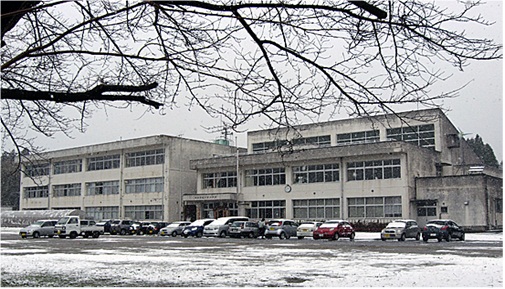
Fig 4: Noto Gakusha (Kanazawa University’s Noto Branch)
Noto Peninsula Satoyama Satoumi Nature School (Noto Hantou Satoyama Satoumi Shizengakkou)
The first in our series of projects in Noto was the launch of another nature school at Noto Gakusha, as a “new knowledge platform” for study on the local environment in collaboration with local residents. The Noto Peninsula Satoyama Satoumi Nature School (Noto Hantou Satoyama Satoumi Shizengakko) began in 2006 under a three-year funding scheme from Mitsui & Co. Ltd. Environment Fund. We sent in a fresh doctorate to live and work in the area as resident researcher for the Nature School. The main activities of the Nature School include: researching biodiversity of satoyama and satoumi; organizing voluntary conservation activities of satoyama and satoumi by local communities, the universities and urbanites (Fig 5); environmental education targeted for local elementary and middle schools, universities and residents (Akaishi 2010). In order to promote the institute’s collaboration with local residents, Suzu Support Group was formed among city employees, community leaders and pioneers in agribusiness, which would develop into a non-profit organization “Oraccha-no Satoyama Satoumi (Our SatoyamaSatoumi)” in 2008. After the expiration of the initial fund in 2009, the Nature School is run by the NPO whose steering committee includes both local leaders and university staff.
The NPO serves the basis of our regional collaboration with various local stakeholders centered upon the Noto Gakusha (see also Fig 9). In order to revitalize the Noto as a whole, however, a broadening of area and approach was necessary. This has been sought through a series of projects and organizations subsequently implemented in Noto Gakusha.
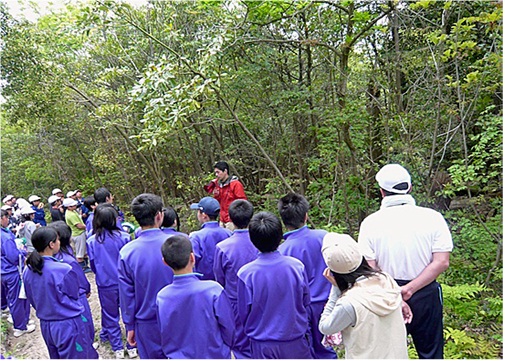
Fig 5: Satoyama maintenance with local schoolchildren at Satoyama Satoumi Nature School
“Noto Satoyama Meister” Training Program
The most fundamental and enduring effect in regional revitalization should result from the empowerment of its protagonists, the people. The “Noto Satoyama Meister” Training Program is our capacity building division, or education in the context of regional collaboration. We train young professionals up to 45 years of age with the aim of preparing these individuals to start up environmentally-conscious agriculture, forestry, fishery and related businesses, or to take on leadership-roles within the Noto area. The two-year course of weekend lectures and hands-on training includes various topics such as environmental studies (Fig 6), development, local culture (Fig 7), agricultural technique (Fig 8) and agribusiness (Fig 9). Our biweekly public seminars are broadcast on the local cable television network and serves to disseminate our vision in the Noto area (Kawabata 2010).
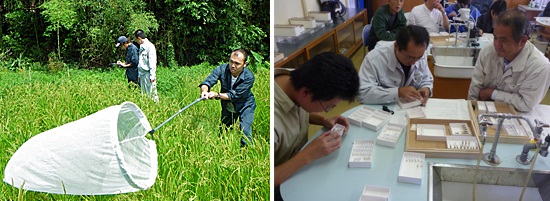
Fig 6: Monitoring biodiversity in paddy fields
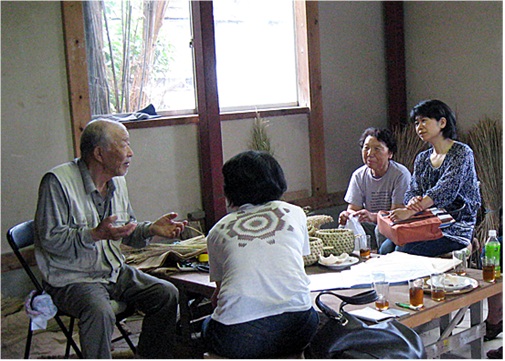
Fig 7: Satoyama Meister students learning from local elders

Fig 8: Noto Satoyama Meister staff & students harvest rice from our environmentally conscious paddy field

Fig 9: Learning to tend to customers at the NPO-run farmers’ market
While most of the students are from the Noto area, employed in civil service, forestry and agricultural cooperatives or private enterprises, some have moved in from the urban areas to participate in the program and to enter agriculture.
Apart from coursework, students engage in their thesis study on original means to revitalize Noto’s satoyama and satoumi. The range of topics so far have varied from non-timber forest product marketing, carbon-minus charcoal production, natural dye using local satoyama material, refurbishing abandoned houses to let, creating community spaces to promote intergenerational communication, tours encouraging returned overseas volunteers to move into the Noto area, etc. We encourage students to choose topics that are grounded on their very local context that which they could pursue after completion of the program. The freedom of range of thesis topics is our way of ensuring the revitalization process to be endogenous and sustainable. At the end of their course students will submit a thesis, which is subject to oral defense in front of a committee including local authorities in the relevant field. Graduation from our program, in other words, is a handover process of the revitalization initiative to the newly born Meister’s local context. Our goal is to train a total of sixty Meisters—each with his/her own project to revitalize Noto—over five years of funding by Ministry of Education, Culture, Sports, Science & Technology (MEXT) from 2007 through 2012.
In order to carry out a program of such scale and nature, we had to consolidate our implementation structure whilst expanding our partnership framework. We staffed five young researchers in ecology, agronomy, public policy and anthropology to reside in Suzu to run our program full time. Senior staffs based in Kanazawa would commute nearly every weekend to supervise the operation, thereby connecting the Noto Gakusha to the Kakuma main campus. Of special note are our technical assistants who are experts in local agriculture, fishery and forestry and have excellent communication with the local stakeholders. Their presence is particularly important given Kanazawa University’s lack of faculty in agronomy and related disciplines. To bridge this gap we also sought collaboration with Ishikawa Prefectural University whose former body was an agricultural junior college. Having young students and staff move into the rural areas of Noto, and encouraging leadership personalities to join our program have meant that collaboration with local governments at various levels would be ideal. Thus we concluded a series of partnership agreements, firstly the “Chiikidzukuri Renkei Kyotei (Regional Development Partnership Agreement, 13 July 2007)” with the two municipalities (Suzu, Wajima), two townships (Noto, Anamizu) and Ishikawa Prefectural University (formerly Ishikawa Prefecture Junior Agricultural College). The process stimulated our communication with the Ishikawa Prefectural Government. A trans-sectoral organization “Satoyama Meister Renrakukai (Satoyama Meister Liaison Committee, 31 August 2007)” was formed within the Prefectural Government, which would develop into another pact, the “Houkatsu Renkei Kyotei (Comprehensive Partnership Agreement 23 April 2008)” between the prefecture and the university (Uno 2010).
Apart from our expanded staffing, partnership with the government and educational sector, we enhanced our collaboration with local farmers, foresters, the fishery sector and private enterprises etc. “The Satoyama Meister Support Network” was formed in addition to our preexisting network of Satoyama Resident Researchers to provide local assistance in the implementation of our program. Its members have opened their fields as sites for our hands-on coursework (Ito et al 2010) as well as provided on-the-job training for students and graduates aspiring to start up on their own (Kawabata 2010).
Several graduates have already become forerunners in the promotion of environmentally-friendly agriculture, and a network of eco-conscious farmers and agribusiness is beginning to emerge. Synergies are also beginning to develop between our other ongoing projects, its staff and its participants (see below).
Noto Peninsula Satoyama Satoumi Activity
This is another program funded by Mitsui & Co. Ltd. Environment Fund (2009-2012) which focuses specifically on promoting urban-rural exchange in the Noto area. Through this program, students and youth from urban areas are encouraged to engage in various research, educational, and satoyama / satoumi related conservation activities with residents of Noto. Our aim is to bring one thousand participants through this exchange program over the course of three years, with the hope of creating new possibilities for enrichment of the Noto area. We have organized various short term courses for the study and experience of Noto’s satoyama and satoumi mainly for universities and the University Consortium Ishikawa as well as companies interested in corporate social responsibility. In direct promotion of the Satoyama Initiative, we have coordinated JICA (Japan International Cooperation Agency)’s training program in Noto for participants from Asia, Africa and Latin America (Fig 10). The light-footed project has been able to catalyze various synergies straddling the Noto and the urban areas. A recent example of such coordination is the value-added sales of terrace-paddy rice produced by smallscale Oku-Noto farmers to enterprises and markets in Kanazawa (Fig 11).

Fig 10: JICA course for the promotion of the Satoyama Initiative
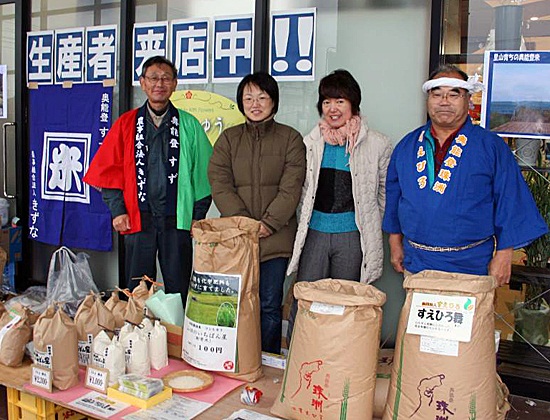
Fig 11: Promoting the sales of Oku-Noto rice
“Noto Ikimono Meister” Training Program
“Ikimono” is a comprehensive term in the Japanese language applied to all “living things.” This is a Nippon Foundation-funded program (2010-2013) that aims to train five “meisters” a year to become proponents communicating the importance of human-nature symbiotic relationships to future generations. School teachers and local citizens develop skills in teaching children about satoyama, satoumi and their biodiversity. Farmers, fishers, foresters and eco-tour guides will learn how to conserve and utilize biodiversity in their respective fields (Fig 12). The one-year course provided by this program was ideal also for Satoyama Meister Students who aspires to become interpreters and coordinators for learning opportunities of Noto’s satoyama and satoumi. Some of the inaugural Ikimono Meisters are attending Satoyama Meister as well—we are about to witness the birth of “double Meisters” equipped for Noto’s revitalization.
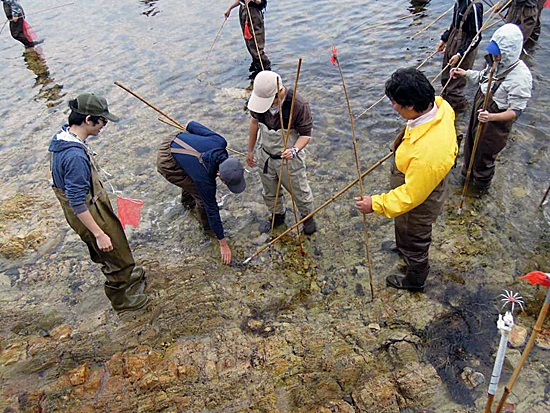
Fig 12: Ikimono Meister graduate teaching traditional octopus fishery to Nagano University students on field course coordinated by Satoyama Satoumi Activity
Noto Operating Unit
Our efforts in Noto thus far had been a mere aggregate of projects each delimited by its own funding period. In order to seek continuity of our collective undertaking, we established a formal organization within the university. Thus in October 2010, as we have founded “Kakuma Satoyama Headquarters” we have also founded the “Noto Operating Unit” the office for which is installed in the Noto Gakusha.
As we expanded our mission to the Noto Peninsula, we have consolidated our partnership with various local and regional actors while formalizing our organizational structure. One of the most important lessons learnt through this process has been that in order to mainstream the satoyama approach, capacity building had to occur both at the personal and institutional levels, not only at the field of relevance but also within our main campus. For our non-tenured staff in Noto who had to face the lived-in realities of the rural setting, learning from Noto’s residents and its satoyama and satoumi was a prerequisite to project implementation. In order for us to integrate our Satoyama Satoumi Project into the university structure, however, our challenge has been to educate our main campus academic & administrative staff towards the importance of regional revitalization and biodiversity conservation. This is an ongoing process which is related to yet another strand in our effort: our various research activities and increasing commitment to the international biodiversity conservation regime.
III. Research and global outreach
The university has conducted research in socio-ecological production landscape areas in Ishikawa and other parts of the world. We are currently consolidating the knowledge produced through various disciplines including ecology, meteorology, health sciences, economy, sociology, anthropology, etc., to serve as a basis for our further activities in research, education and regional collaboration.
The most relevant synthesis to date comes from Japan Satoyama Satoumi Assessment as a sub-global assessment of the millennium ecosystem assessment, co-chaired by Koji Nakamura for the Hokushinetsu Cluster (Kikuzawa et al 2010). The compiled knowledge serves as a basis for our ongoing research projects such as the Satoyama Satoumi Revitalization Study and the Satoumi Study. Our focuses include the creation of GIS databases for an ecological history approach, biodiversity assessment in rice paddy systems and material circulation in satoyama/satoumi systems, and assessing continuity of cultural practices in depopulating areas, etc.
The Hokushinetsu process has been unique compared to other JSSA clusters in its bottom-up approach involving not only scientists but a variety of local and regional stakeholders, connecting them to national and international regimes for biodiversity conservation. The partnership framework formed during the assessment has proven useful to our ongoing activities mediating local, regional and global processes in the transmission of satoyama and satoumi values, as in our involvement in CBD related events and organizations such as COP9 and 10 and the Satoyama Initiative, in alliance with UNU-IAS and Ishikawa Prefecture. We are currently working with local governments towards the planning of biodiversity strategies in line with Japan’s implementation of the CBD. Following the selection of Noto’s satoyama and satoumi as a GIAHS site, we are also consulting with the relevant four municipalities and four townships in order to assist local policy formation.
Our commitment towards the promotion of these international regimes has had the effect of enhancing the visibility of our project within and outside the university. The attained recognition has helped us to formalize our organizational structure within the university in order to seek continuity in our efforts in the revitalization of our satoyama and satoumi.
IV. Towards a “Noto Model” for regional revitalization
Over the years, the university’s efforts towards maintaining, revitalizing/restoring socio-ecological production landscapes and seascapes in the region have developed to encompass all three colleges and various facilities within the university structure (Kanazawa University Satoyama Satoumi Project 2011), such that between 2010 and 2011, we have implemented over fifty independent programs in the Noto Peninsula alone. As our University Action Goal has come to state, we now seek to promote Noto Peninsula with a focus on integrated area studies at the highest domestic level (Kanazawa University 2011).
As we near the termination of our “Noto Satoyama Meister” Training Program (March 2012), we are in the course of planning our next phase in capacity building towards satoyama and satoumi revitalization. Among our plans is to create a “Noto Campus”, in which the whole area can be envisioned as a common arena for multidirectional education and research in alliance with the prefecture, townships and municipalities, local communities and various stakeholders of the Oku-Noto, including universities with a shared interest in the area. We are seeking a “Noto Model” of regional revitalization, in which young aspiring individuals shall find the door to our satoyama and satoumi the very door that opens them up to both global and local society, replete with opportunities for generations to follow.
References
Akaishi, D. 2010. Living in satoyama satoumi: the challenge of a resident researcher (Satoyamasatoumini ikiru: jochukenkyuinno chosen). In: Nakamura, K. & R. Kada eds. 2010. “SATOYAMA Renaissance: Message from Noto Region, Japan (Satoyama Fukken: Noto karano Hasshin)”. Soshinsha, Tokyo: 178-193.
Ito, K., D. Utsunomiya, S. Koji. 2010. Cultivating the next generation of eco-conscious wet paddy farmers (Kankyohairyono suidennogyowo sasaeru ninaiteno ikusei). In: Nakamura, K. & R. Kada eds. 2010. “SATOYAMA Renaissance: Message from Noto Region, Japan (Satoyama Fukken: Noto karano Hasshin)”. Soshinsha, Tokyo: 141-163.
Kanazawa University 2010 The charter of Kanazawa University. In: Outline of Kanazawa University. Kanazwa University Public Relations Strategy Office, Kanazawa.
Kanazawa University 2010 Kanazawa University Action Plan 2010.
Kawabata, H. 2010. Regional revitalization of the Oku-Noto and the Satoyama Meister Training Program (Okunotono chiikisaiseito satoyama maista- yosei puroguramu). In: Nakamura, K. & R. Kada eds. 2010. “SATOYAMA Renaissance: Message from Noto Region, Japan (Satoyama Fukken: Noto karano Hasshin)”. Soshinsha, Tokyo: 104-123.
Kikuzawa, K. et al. 2010 Japan Satoyama Satoumi Assessment: Experiences and Lessons from Clusters. United Nations University Institute of Advanced Studies, Yokohama.Koshiba, Y. 2010. Prospects for senary industrial businesses utilizing local resources (Chiikishigenwo ikashita rokujisangyougata bijinesuno kanousei). In: Nakamura, K. & R. Kada eds. 2010. “SATOYAMA Renaissance: Message from Noto Region, Japan (Satoyama Fukken: Noto karano Hasshin)”. Soshinsha, Tokyo: 165-176.
Nakamura, K. et al. 2006. Satoyama biodiversity and conservation in the Pan-Japan Sea Region. In: K. Hayakawa ed., Past, Present Future Environments of Pan-Japan Sea Region. Maruzen, Tokyo: 510-546.
Nakamura, K. & R. Kada eds. 2010. “SATOYAMA Renaissance: Message from Noto Region, Japan (Satoyama Fukken: Noto karano Hasshin)”. Soshinsha, Tokyo. Uno, F. 2010. Regional Coordinator: a Profession (Chiikirenkei ko-dineita-toiu shigoto). In: Nakamura, K. & R. Kada eds. 2010. “SATOYAMA Renaissance: Message from Noto Region, Japan (Satoyama Fukken: Noto karano Hasshin)”. Soshinsha, Tokyo: 195-208.

